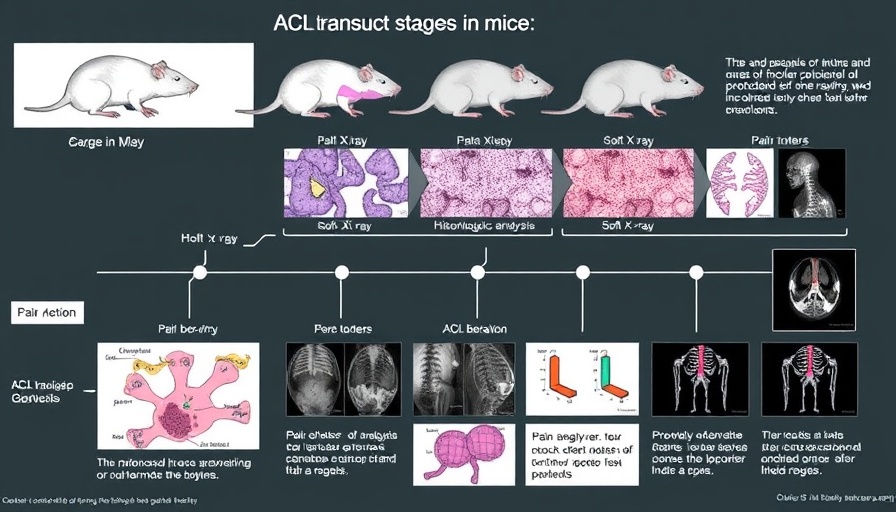
Understanding Joint Instability in Knee Osteoarthritis
Knee osteoarthritis (OA) is a common condition that affects millions of people worldwide. One of the crucial aspects of managing early stages of this disease is understanding joint instability, which can lead to inflammation and pain. Recent studies indicate that controlling this instability can significantly reduce discomfort in individuals suffering from early knee OA.
The Role of Inflammation in Joint Health
Inflammation plays a critical role in knee osteoarthritis. In the context of OA, as the cartilage deteriorates, the joint may not work properly, which can trigger inflammatory responses. This inflammation not only exacerbates pain but also leads to further joint degeneration. The relationship between joint instability and inflammatory pain is particularly concerning, making effective management even more essential for those affected.
Clinical Insights: Controlling Joint Instability
Research emphasizes the importance of maintaining joint stability to mitigate inflammation. Implementing techniques such as physical therapy, strengthening exercises, and using braces can help stabilize the knee joint. These interventions assist in reducing the mechanical strain placed on the joint, thereby minimizing the inflammatory response triggered by instability.
Future Trends: Innovative Approaches to Knee OA Treatment
The landscape of knee OA treatment is evolving, with new technologies showing promise. For instance, wearable devices that monitor joint movements can provide real-time feedback, allowing patients and healthcare providers to adjust treatment plans proactively. This could lead to more personalized approaches in managing joint health, ultimately enhancing the quality of life for individuals suffering from OA.
A Personal Story: The Impact of Knee Health on Daily Life
Understanding the challenges faced by those with knee osteoarthritis is crucial. For many, simple tasks become daunting due to instability and pain. One individual shared that after adopting a combination of physical therapy and lifestyle changes aimed at stabilizing their knee, they noticed a remarkable difference in their day-to-day activities, highlighting the real-world impact of this condition and its management.
Actionable Steps for Individuals Facing OA Challenges
For those experiencing early stages of knee osteoarthritis, taking control of joint health is paramount. It’s essential to consult with healthcare professionals about creating a tailored plan that might include exercises focused on strengthening the muscles around the knee, learning about proper body mechanics, and possibly orthotic interventions. Additionally, educating oneself about the disease can empower patients in their journey towards better management.
Confronting Common Misconceptions Around Knee Osteoarthritis
There's often confusion surrounding knee osteoarthritis. One common misconception is that surgery is the only solution for severe pain and instability. However, as research shows, many conservatively managed options are available that can alleviate symptoms without invasive procedures. Understanding these alternatives is vital for those seeking to mitigate pain and manage their condition effectively.
Final Thoughts on Osteoarthritis Management
As we continue to explore ways to improve the lives of those affected by knee osteoarthritis, recognizing the importance of joint stability is crucial. Tools and techniques are available to help manage pain and reduce inflammation effectively. By taking proactive steps, individuals can significantly improve their quality of life.
 Add Row
Add Row  Add
Add 




 Add Row
Add Row  Add
Add 








Write A Comment